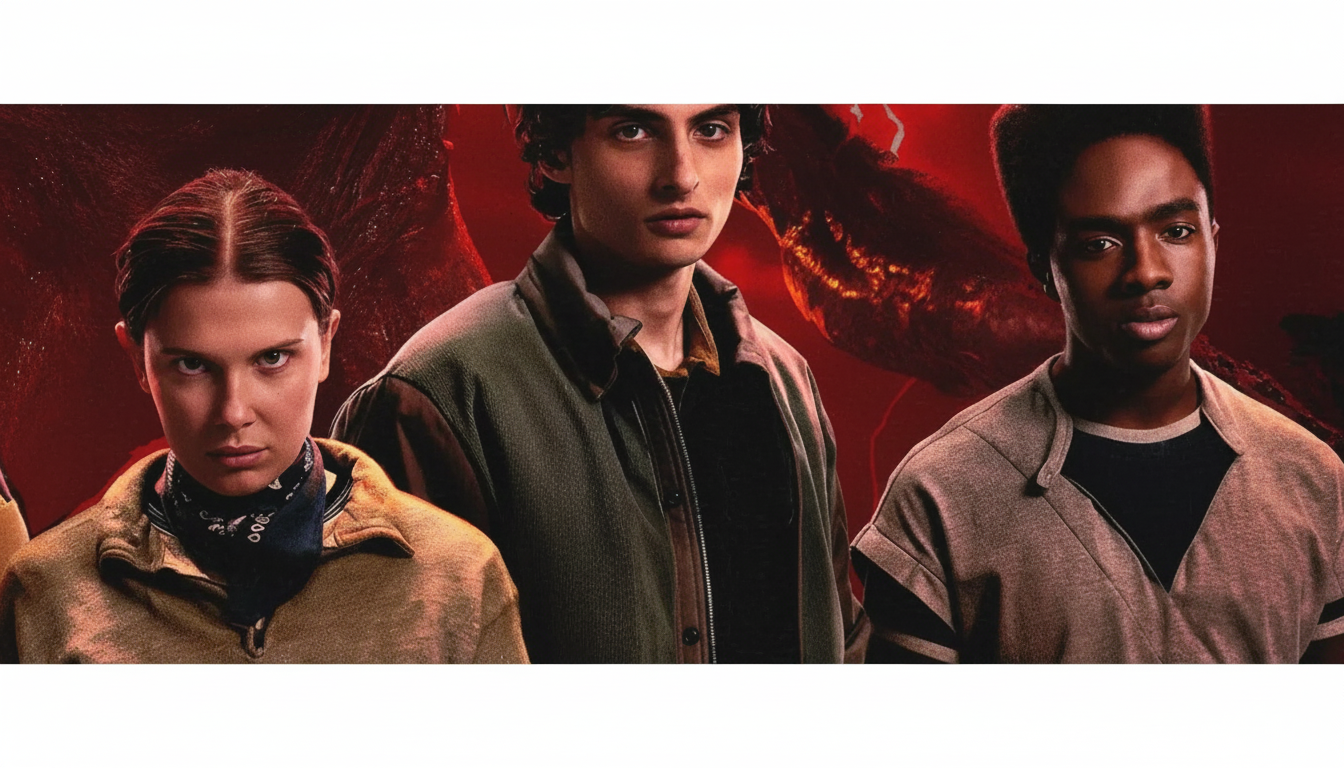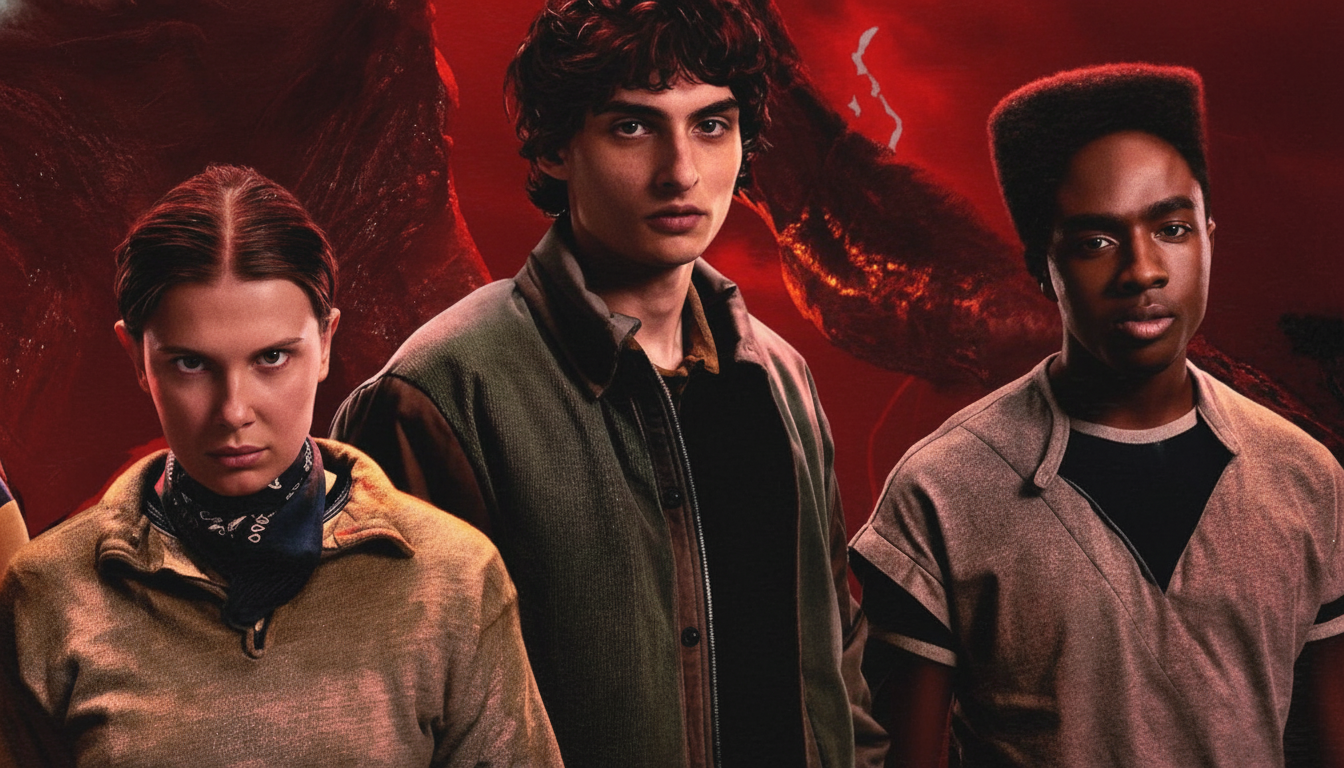Netflix is taking Hawkins to the big screen. The feature-length series finale of Stranger Things will play in more than 350 movie theaters across the US and Canada, aligning with its global streaming debut to deliver a communal, prime-time sendoff for one of TV’s most-watched franchises.
What Netflix Announced for the Season 5 Finale
The streamer confirmed that the Season 5 closer will receive a coordinated theatrical rollout with evening showtimes, effectively creating a day-and-date event that pairs living-room viewing with a packed auditorium option. The finale has been described as feature-length, signaling a supersized capstone designed to play with cinema-grade picture and sound.

Series creators Matt and Ross Duffer have long flirted with big-screen aspirations for their finale, calling the chance to watch it with a theater full of fans “the perfect way to celebrate the end of this adventure.” It’s a carefully engineered moment: end-of-year fan energy, a high-stakes episode, and a format tailored for shared reactions.
A Pivot With Strategic Upside for Netflix and Fans
The move marks a notable shift from Netflix’s earlier posture. In prior interviews, Netflix content chief Bela Bajaria downplayed a theatrical plan for the finale, arguing that the series already commands vast attention on-platform. The reversal speaks to how eventizing an episode can amplify cultural reach without undermining streaming momentum.
There’s precedent that supports the experiment. When Netflix briefly tested wider theatrical exposure for Glass Onion, industry trackers like Variety and Deadline estimated a robust multi-million-dollar week from a limited footprint, despite the film quickly returning to streaming exclusivity. Theatrical buzz and scarcity can stoke conversation, push must-watch urgency, and still funnel the largest audience to Netflix’s app.
Crucially, Stranger Things is one of Netflix’s most potent retention engines. Netflix’s own Top 10 data shows Stranger Things 4 generated more than 1.3 billion hours viewed in its first month, with Nielsen reporting record weekly minutes streamed in the US. A theatrical crescendo doesn’t replace that power; it magnifies it.
Event Cinema Is Booming at North American Theaters
Theaters are increasingly leaning on “event cinema” to galvanize audiences—concert films, fan screenings, and specialty TV episodes that play like live communal gatherings. Comscore has tracked sharp surges in this category, highlighted by music-film breakouts and appointment screenings that sell out premium formats.

Scripted television has cracked the model before. HBO’s Game of Thrones episodes drew IMAX crowds years ago, and franchises like Doctor Who have repeatedly driven strong single-night sales via Fathom Events. Stranger Things, with its jump-scare set pieces, needle drops, and monster-scale VFX, is engineered for applause breaks and collective gasps—exactly the kind of beats that justify a theatrical option.
What Fans Can Expect From the Season 5 Finale
Expect prime evening shows timed to the global streaming launch, standard and premium formats, and a feature-length runtime designed to feel like a proper finale film. While ticketing details will vary by chain and location, major exhibitors in the US and Canada are set to host, with additional seats likely opening as demand spikes.
The big-screen treatment should particularly flatter the show’s creature design, large-scale action, and richly mixed soundscapes that have become trademarks since Season 4’s expansion into blockbuster territory. For fans who’ve followed the Hawkins crew since the first Demogorgon, the collective energy—cosplay, easter-egg buzz, end-credits speculation—will be part of the draw.
The Franchise Stakes and What Comes After the Finale
Netflix has been building Stranger Things into a long-tail universe, from live experiences to the acclaimed stage prequel Stranger Things: The First Shadow. A theatrical finale doubles as a bridge to whatever comes next—spinoffs, new timelines, or fresh mediums—while reinforcing the brand’s status as a cross-platform juggernaut.
Operationally, Netflix still owns the core audience moment at home. Theatrical is additive: a celebration, a marketing flywheel, and a revenue stream that lets the finale behave like the blockbuster it effectively is. For a show that helped define the modern streaming era, going out with a cinema-sized heartbeat feels both nostalgic and savvy.
For viewers, the choice is simple: watch the end of Hawkins’ saga on your couch, or join a theater full of fans for one last scream-along. Either way, the Upside Down is taking over the main stage.

